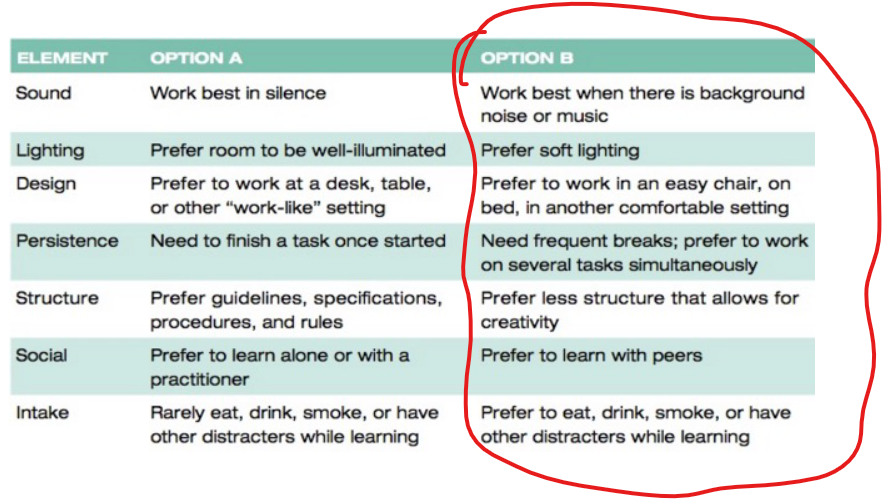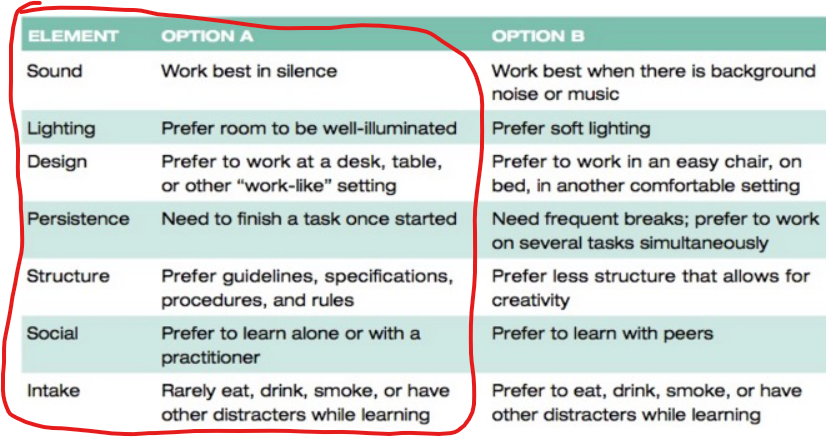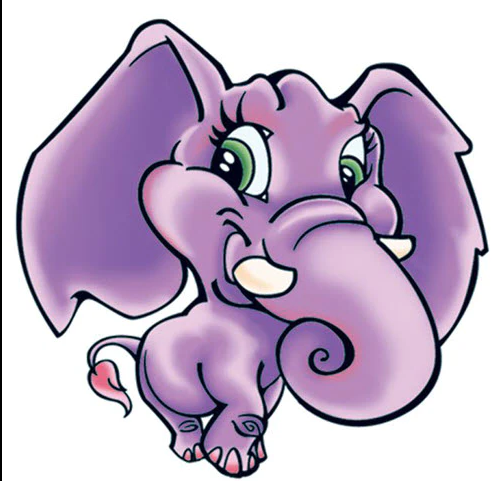Learning Styles
• Instructional environment preferences
- Sound, light, temperature, class design
Learning Styles
• Emotional preferences
- Motivation, persistence, responsibility, structure
Learning Styles
• Sociological preferences
- Individual, pair, peer, team, adult relations
Learning Styles
• Physiological preferences
- Perception, intake (eating), time, mobility
Learning Styles
• Psychological preferences
- Analytic mode, hemisphericity, action
Learning Styles
• Global learners

- Big picture first, details later
Learning Styles
• Analytic learners

- Step-by-step, sequential information
Perceptual Mode

- The way info is received and processed
- Visual
- Analytical
- Kinesthetic
- Auditorial
Perceptual Mode
Visual

- Demonstrations, videos, pictures, models
Perceptual Mode
Kinesthetic

- Simulations, guidance, repeated practice
Perceptual Mode
Analytical

- investigation, “why” something happens
Perceptual Mode
Auditory

- Verbal descriptions, music, sound, clapping
Accommodating Learners
Determine learning styles of individuals

- Formal testing instruments
-
Informal assessment:
- what feedback do
you
get from individuals?
- what feedback do
you
Accommodating Learners // Use multiple presentation styles
1-1:
- learner’s preferred styles
Accommodating Learners // Use multiple presentation styles
Group:
-
eclectic approach
- Vary mode of presentation to cover all modes
Transfer of Learning
- Positive Transfer
- Negative Transfer
- Zero transfer
Transfer of Learning
• Positive transfer
- Past skill facilitates/helps learning a new
skill
- Ex. tackling in football and rugby
Transfer of Learning
• Negative transfer
- Past skill inhibits learning a new skill
- Ex. Hitting a softball and baseball
Transfer of Learning
• Zero transfer
- Two skills are totally unrelated
- Ex. Hitting a softball + Surfing
Transfer of Learning (2 skills)
• Identical elements theory
-
Two skills have a high degree of positive transfer
- the stimulus and response conditions are similar
-
Negative transfer
- stimulus the same BUT response different
Transfer of Learning
• Transfer appropriate processing theory
-
Positive transfer occurs if practice conditions
- engage learner in problem-solving conditions
- similar to the criterion task
- engage learner in problem-solving conditions
Fostering Positive Transfer
Analyze the skill
- Analyze past experience with motor skills
- Fundamental movement pattern
-
Strategic and conceptual
- aspects of game
- Perceptual elements
-
Temporal and spatial elements
- Time and Space
Fostering Positive Transfer
Determine the cost-benefit tradeoff
- Are the benefits of the drill worth the time it takes to teach it?
- Will there be positive transfer?
Fostering Positive Transfer
- Analyze the skill
- Determine the cost-benefit tradeoff
- Get to know the learner
- Point out similarities and differences
- Ensure skills referred to are well learned
- Use analogies
Fostering Positive Transfer
• Get to know the learner
– Integrate past experience with new learning
Fostering Positive Transfer
• Point out similarities and differences
– Use specific examples that compare fundamental aspects of each skill
Fostering Positive Transfer
Learned skills
- Make sure skills have been well learned
- before being put into play
Fostering Positive Transfer
• Use analogies
Create a mental picture of the skill
Fostering Positive Transfer
• Maximize similarities between practice and performance
- multiple situations => simulate game-like conditions
Fostering Positive Transfer
Consider the skill level of the learner
- Advanced level learners => need more skill- specific cues
- beginners => instructional cues
Motivation to Learn
-
Give reasons
- why it is important to learn the skill
-
Create an environment
- positive, supportive, and challenging
- Give learners choices
-
Offer/ Provide opportunities
- for autonomy
- to demonstrate success
-
Use
- cooperative activities and stress cooperation